For what feels like the first time ever, admirers of Bang & Olufsen’s gorgeous products have an entry point that won’t melt their wallet.
The market for portable Bluetooth speakers is an embarrassment of riches, but BeoPlay (the Danish company’s more consumer-facing sub-brand) has carved out a perfect niche for themselves with the A1.
A Beautiful Object
The A1 turns heads.
It’s a simple shape: a perforated pebble and a bit heftier than you’d expect. Reassuring material density suggests this is a product made to be used — not just looked at — an impression strengthened by the distressed product photography on the website. And, of course, my own testing.
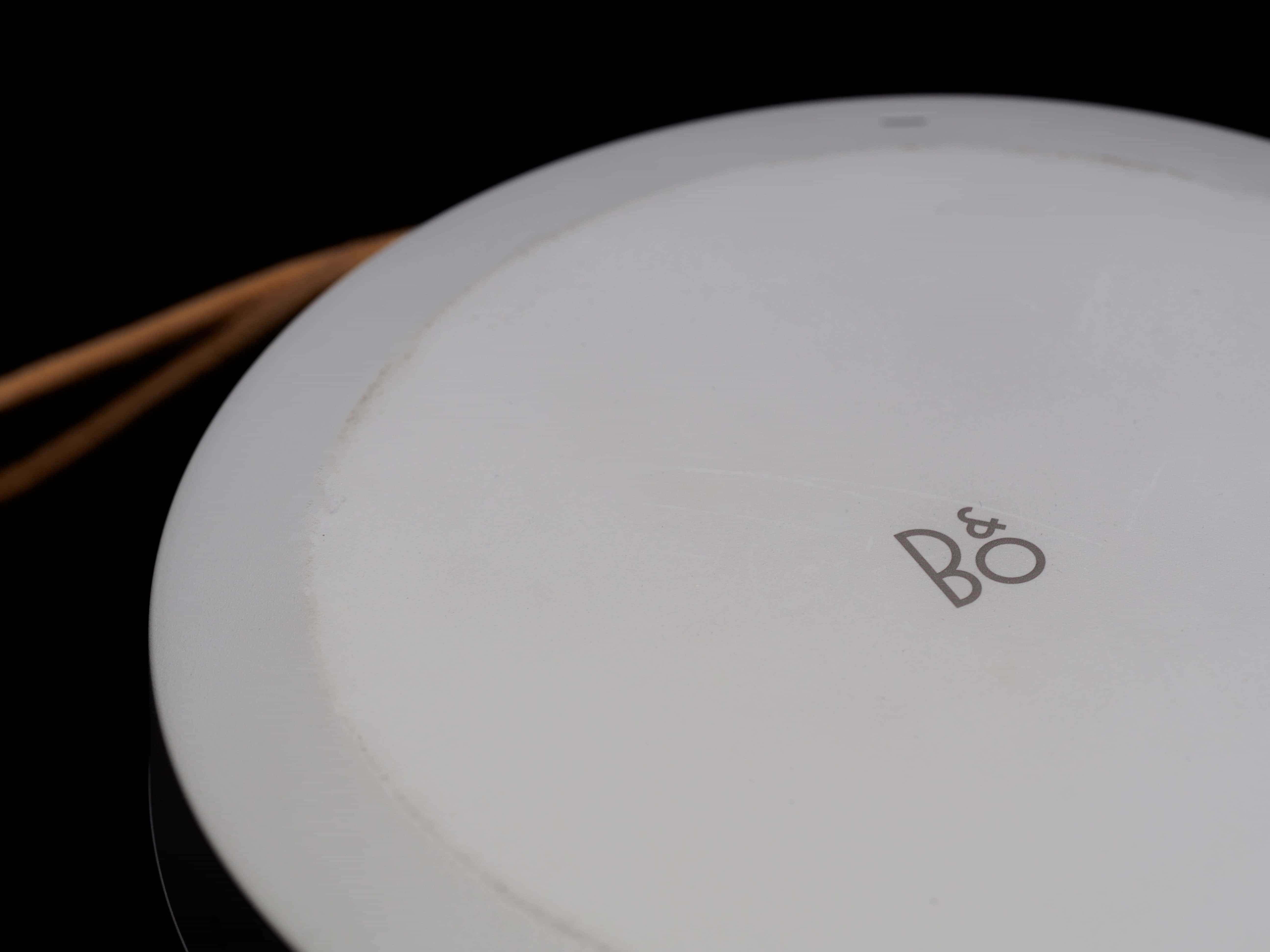
A few scrapes and stains do little to detract from the A1’s eye-catching looks.
The scuffs and bruises in my own photos were earned in daily usage, and I left them there rather than trying to paint a false picture of perfection.
The A1 is relatively light, weighing about 600 grams, and the leather cord allows it to pull off a neat trick: hanging onto things. You can hang it on your wall, or off of a tree branch, or even tie it to your backpack like a hipster boom saucer. It sounds silly but I found myself taking advantage of this all the time.
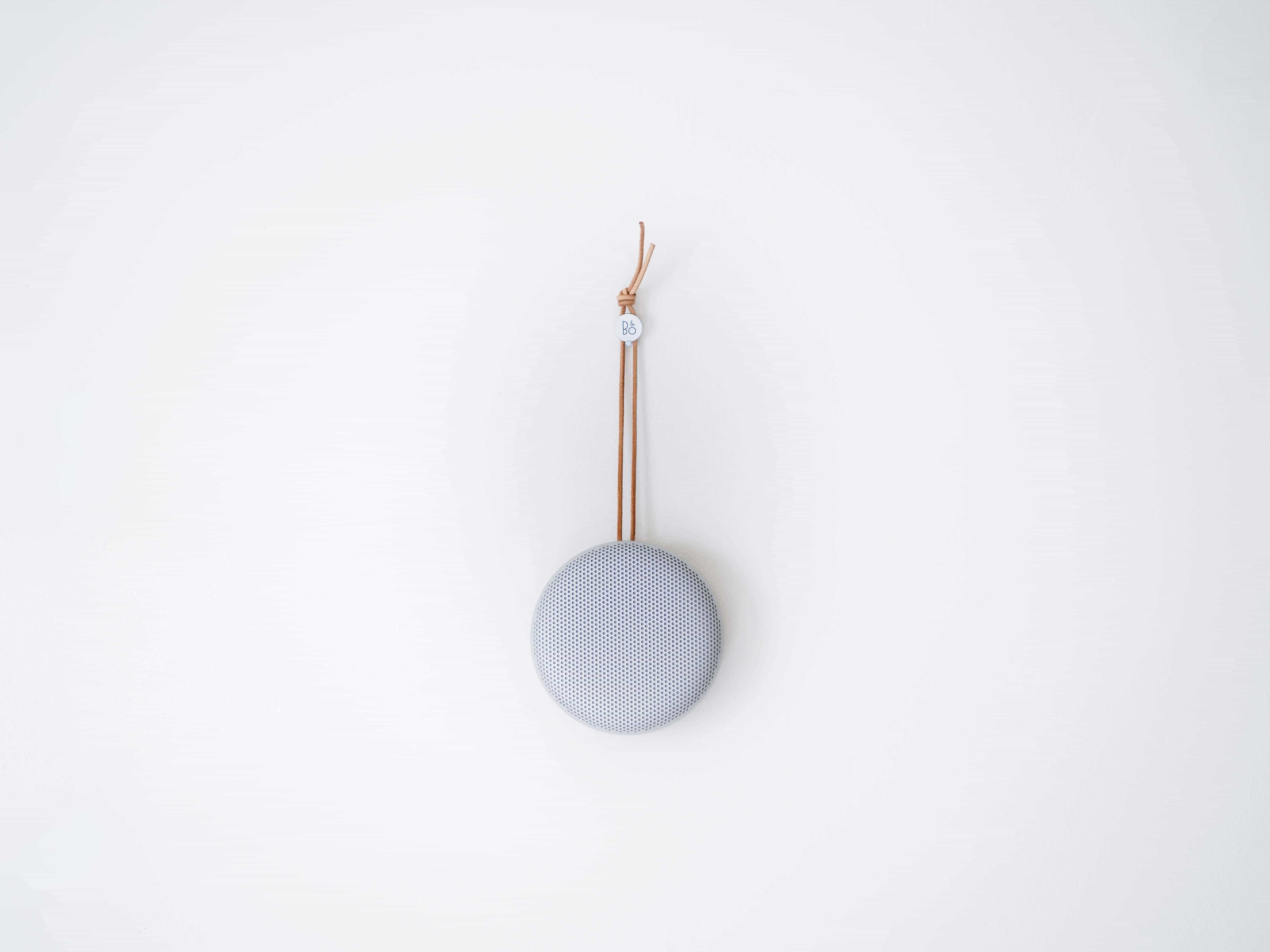
The Beoplay A1 makes a surprisingly handsome wall ornament.
The A1 is interesting but it isn’t immediately beautiful. At first glance it looks like a strange smoke detector on a lanyard, but somehow it captures your attention. It isn’t a consequence of being unique in shape (after all, the UE Roll has a similar form factor), but in retaining a clear identity. Cecile Manz, the A1’s designer, describes it as “character”:
At a certain point in the process you have the feeling something is right, a character has been made. And this is the first step in the long process of finalising a design. Being able to sense that something is just right is important. Then comes all the unavoidable adjustments and corrections in the manufacturing stage with a lot of ping-ponging back and forth. My most important job is to keep my eyes on the character of the object through all the stages, to preserve its spirit in the sometimes muddy final sprint towards the deadline.
Her attention to detail is reflected in the subtleties of the design: the precision of the ports, the lightly textured finish of the sides, the grippy-but-not-tacky bottom plate, and of course the mesmerizing look of its dome.
It’s nearly perfect.
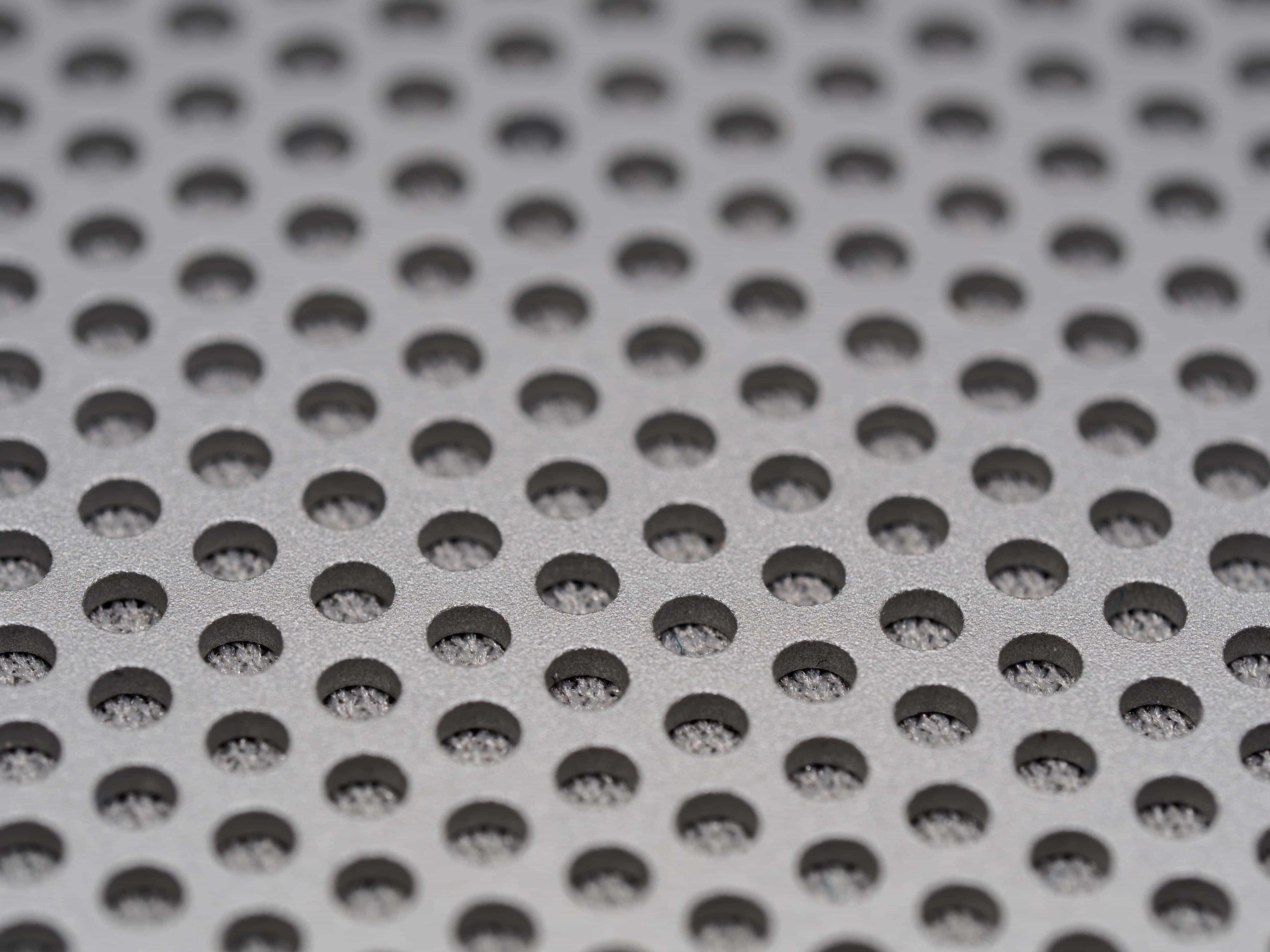
The pattern of small ports on the dome is almost hypnotic.
Bad Buttons
Unfortunately, there’s one major misstep in the A1’s design: the buttons.
While the smooth surface is aesthetically successful, it makes it impossible to discern button location (let alone functionality) by touch (unlike the glorious, huge buttons on the UE speakers). This problem is exacerbated by wispy, indistinct iconography that does very little to help you tell which button does what…even if you’re looking right at it.
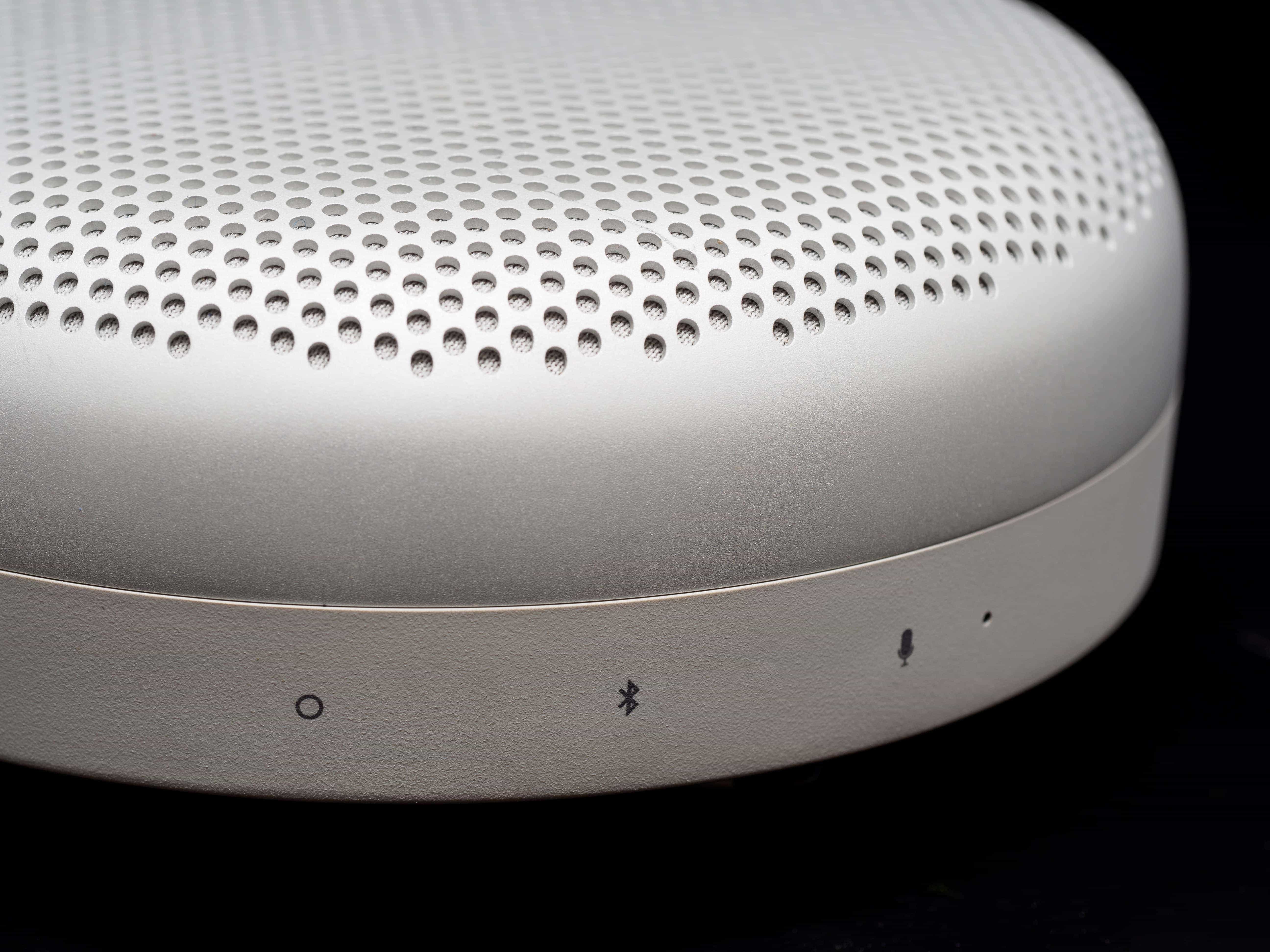
The Power button (no wait, this is the Play/Pause/Summon Siri button…power is on the other side), Bluetooth pairing, and then a microphone port for when you’re using it as a speakerphone.
I stopped counting how many times I pushed the vague circular button instead of the power button.
As if that weren’t bad enough, the tactile feedback is terrible. Button presses feel mushy and uncertain, requiring more pressure than I would like.
It’s a clear example of form over function, but luckily it’s the only one in the A1’s otherwise admirable design.
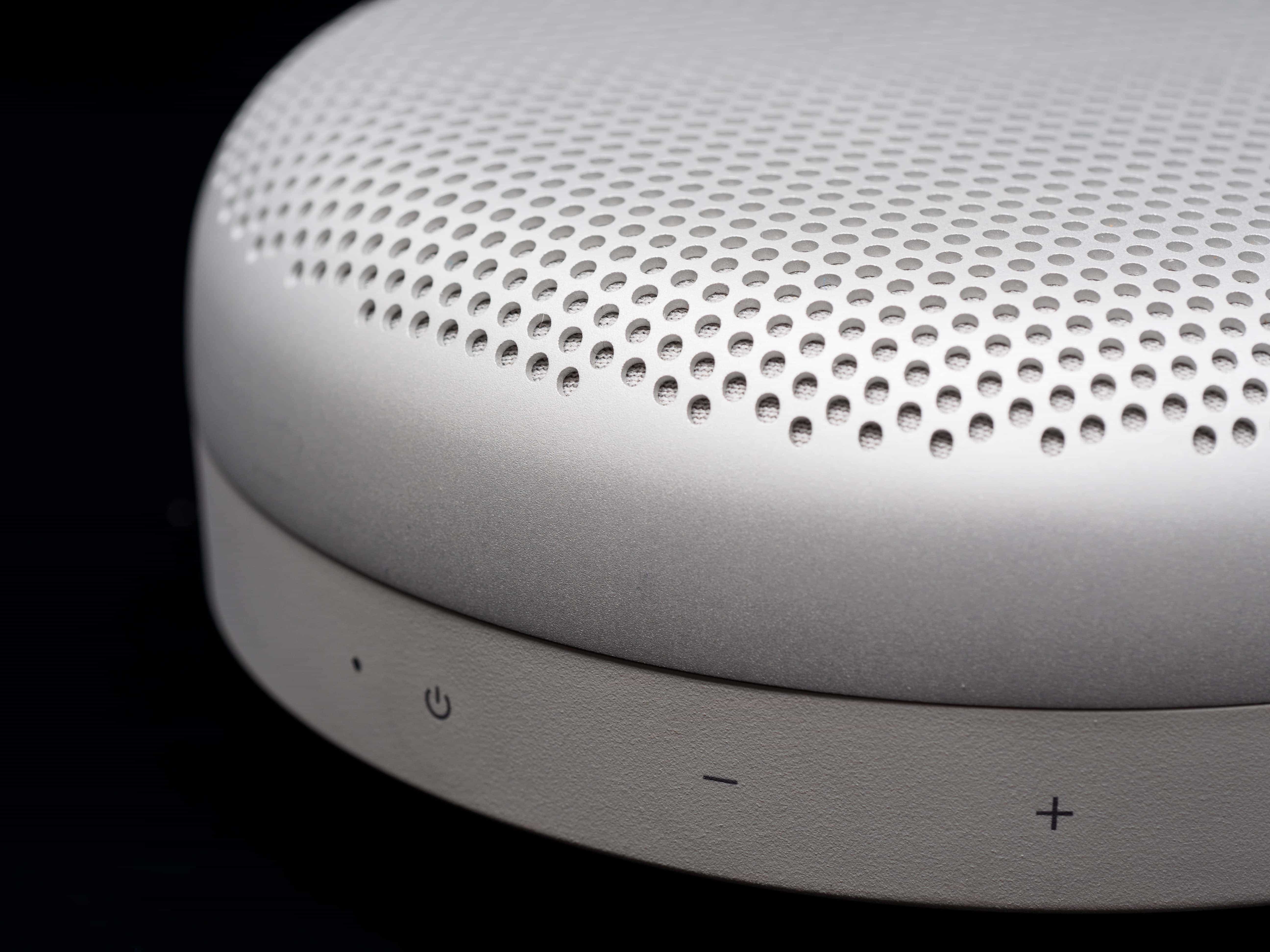
Okay, this is the power button. And Volume Up and Down.
Sonic Boom
The ultimate test of a design’s success is how well it contributes to the product’s purpose, and in the case of the A1, it’s all about sound.
It does an appreciable job of casting audio around a space, especially in normally tricky outdoor conditions. You can confidently take it to park picnics or backyard barbeques and enjoy loud, pleasing music playback.
And it sounds good.
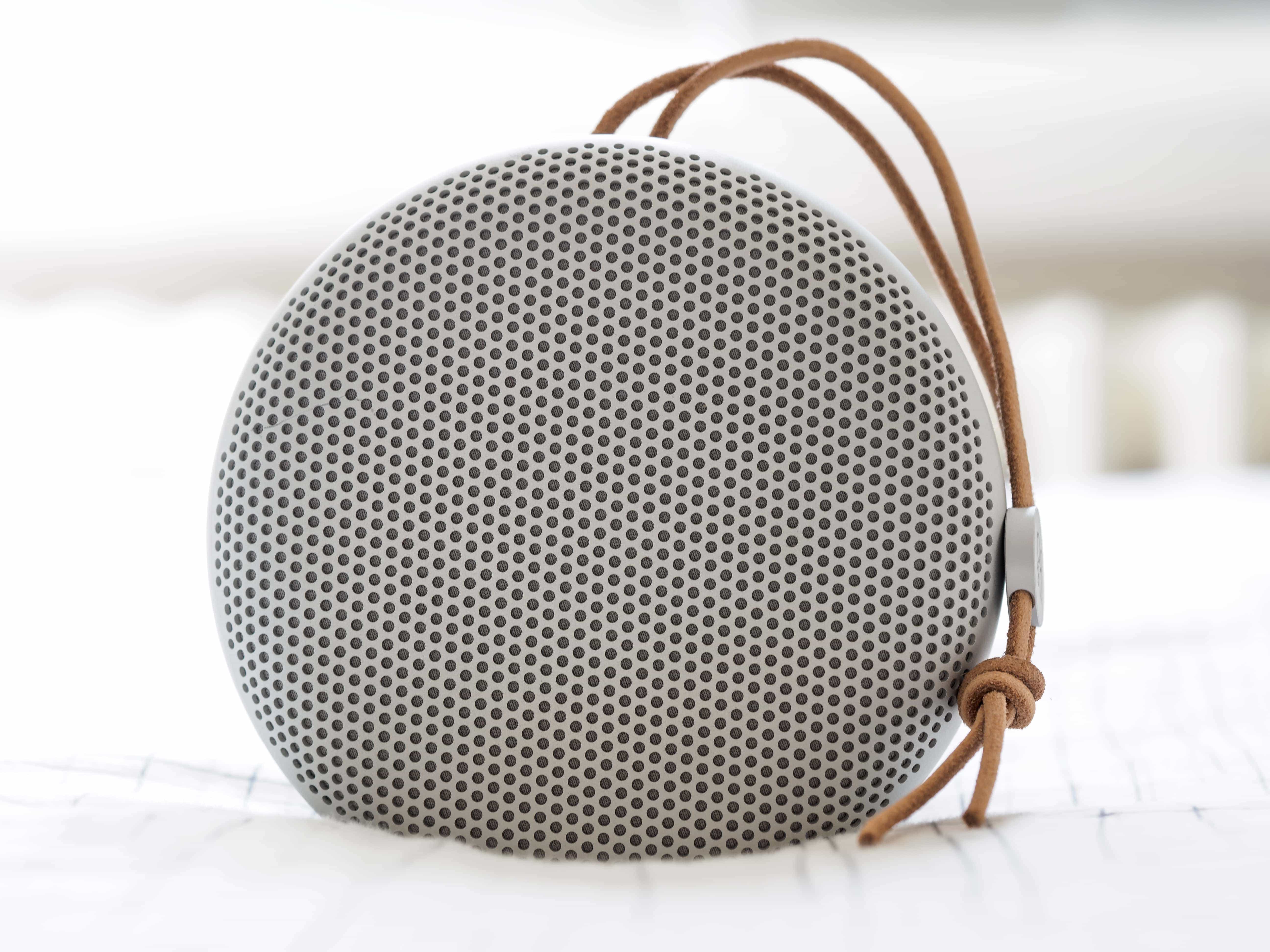
No matter how you orient it, the 360-degree sound output is loud and clear.
I don’t want to exaggerate; after all, this is a small, portable device and physics still apply. But within its size class, it’s certainly among the best sonic performers I’ve heard, easily outclassing similar efforts from UE, JBL, and Bose.
The first thing you’ll probably notice is that it puts out a surprising amount of low end. It lacks the taught, punchy definition of larger speakers, but even this slightly fluffy rendition of low frequencies commands attention.
The highs are well-controlled, avoiding most of the harshness that plagues small speakers at loud volumes. Details come through unscathed, if a little thin, and music with lots of cymbal action retains its sparkle.
The midrange, on the other hand, can be uneven. It seems more or less present depending on what you’re listening to. For example, most music tends to come through sounding balanced, but podcasts often sound boomy, with scooped mids that cripple vocal presence.
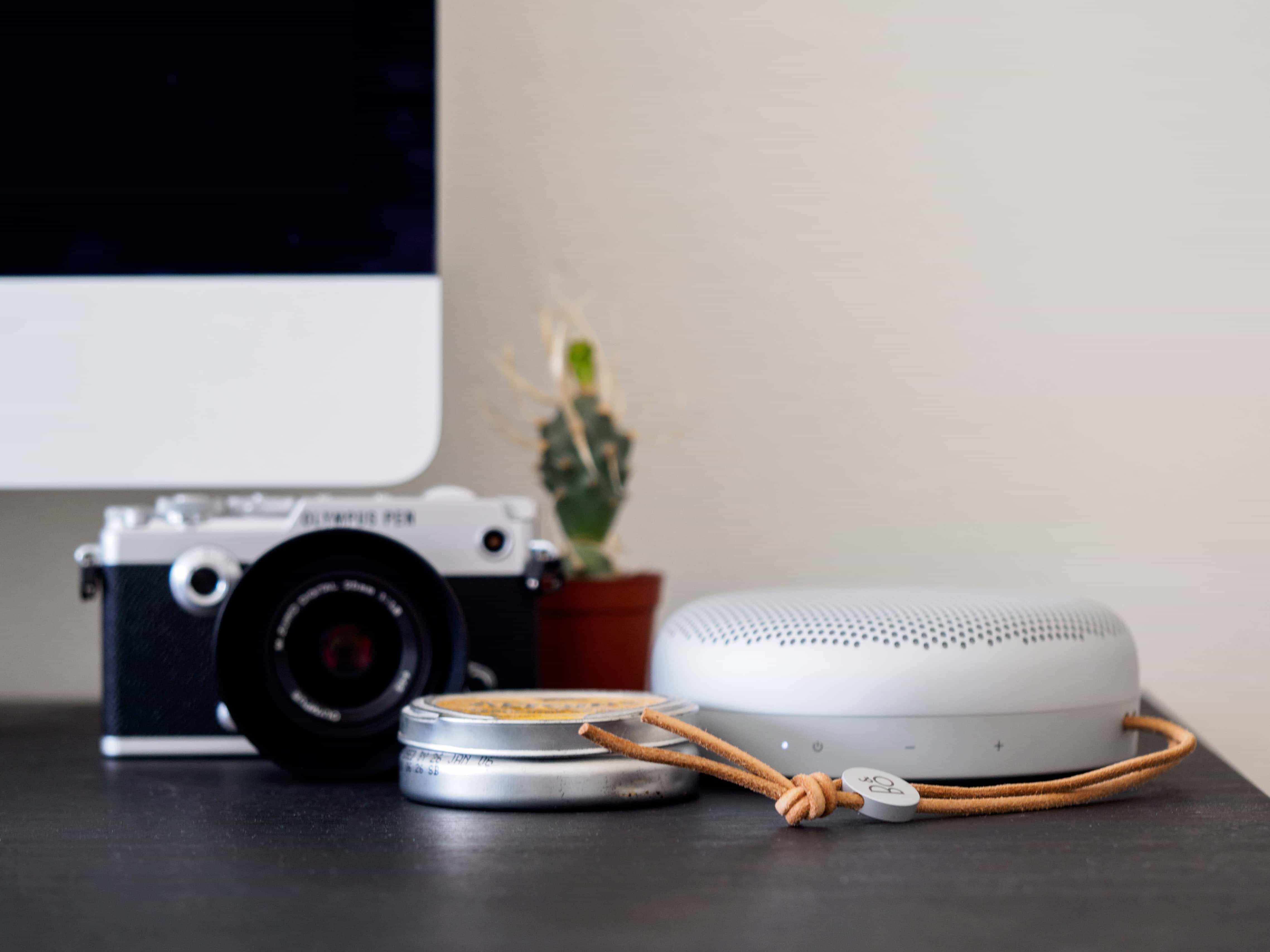
Small and unobtrusive, the A1 looks great pretty much anywhere.
This is especially noticeable in one of my favourite listening contexts: dish washing. I love listening to podcasts while I wash dishes, and with the A1 perched beside the sink on my coffee maker it should be a perfect solution. Unfortunately, the way the default sound profile interacts with the sound of running water means voices disappear and you’re left with an exaggerated low end and not much else.
Luckily, Beoplay have a trick up their sleeve to help mitigate this problem: an app.
There’s An App for This Too
Download the free Beoplay app and you can access some additional controls for your A1 (along with other Beoplay products), including the very helpful ToneTouch.
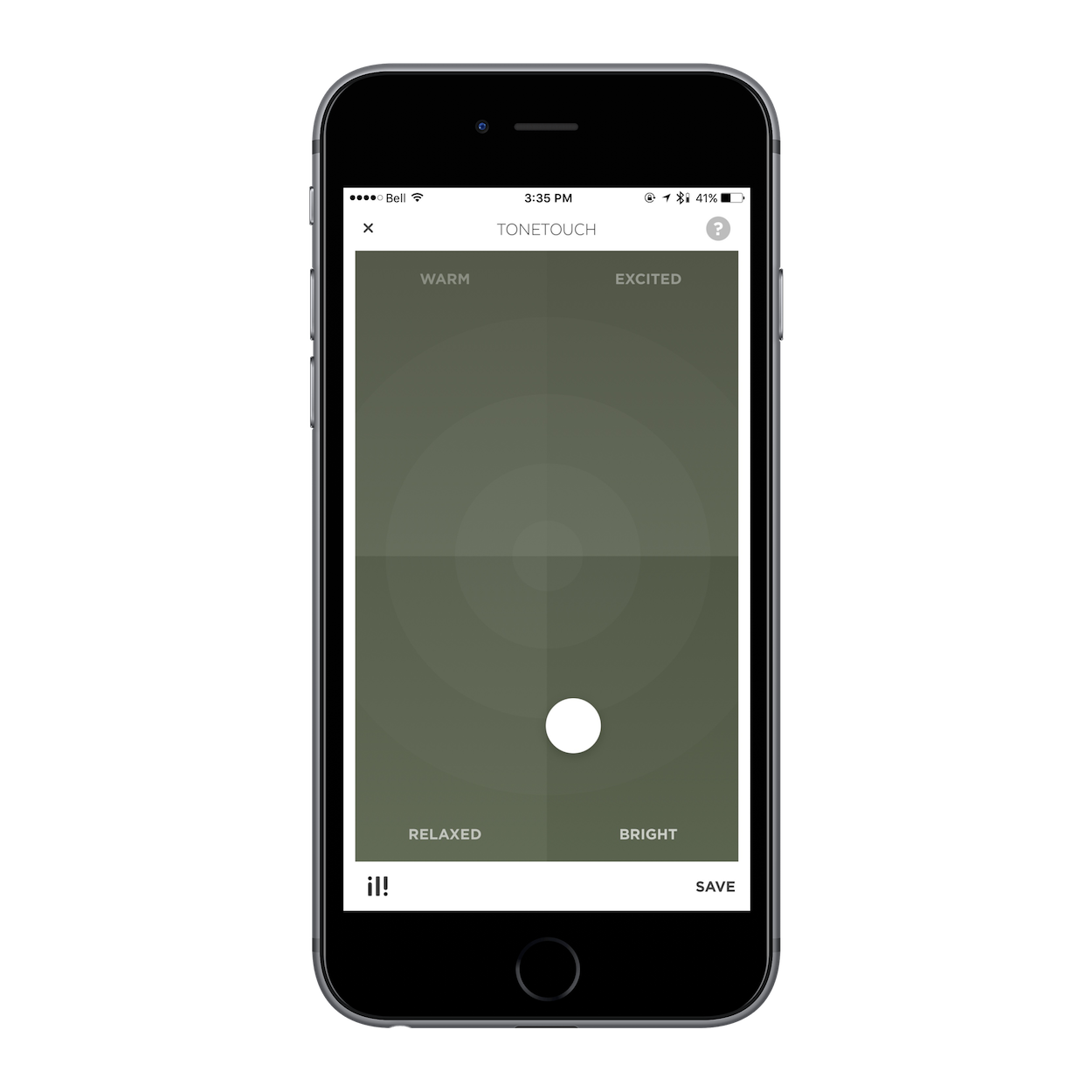
Here’s my profile for podcast listening.
ToneTouch is an interface for customizing the sound profile of the A1 by moving an indicator within a grid of four quadrants: Warm, Excited, Relaxed, and Bright. By adjusting the cursor’s position within this grid, you’re manipulating the audio output processing to emphasize certain frequency ranges and affect the character. In my case, because of the unpleasant boominess of the default profile for podcast listening, I experimented with something different.
Settings can be saved as presets, and Beoplay provides a few stock ones—including one for podcasts (I found it overcompensated, sounding too bright with no body). Because I’m a geek, I preferred to tune things myself and ended up with a pair of custom presets: one for podcasts and the other for music.
The fact that this capability exists at all is a huge point in Beoplay’s favour, because it means you can adjust the sound of the A1 to your preferences.
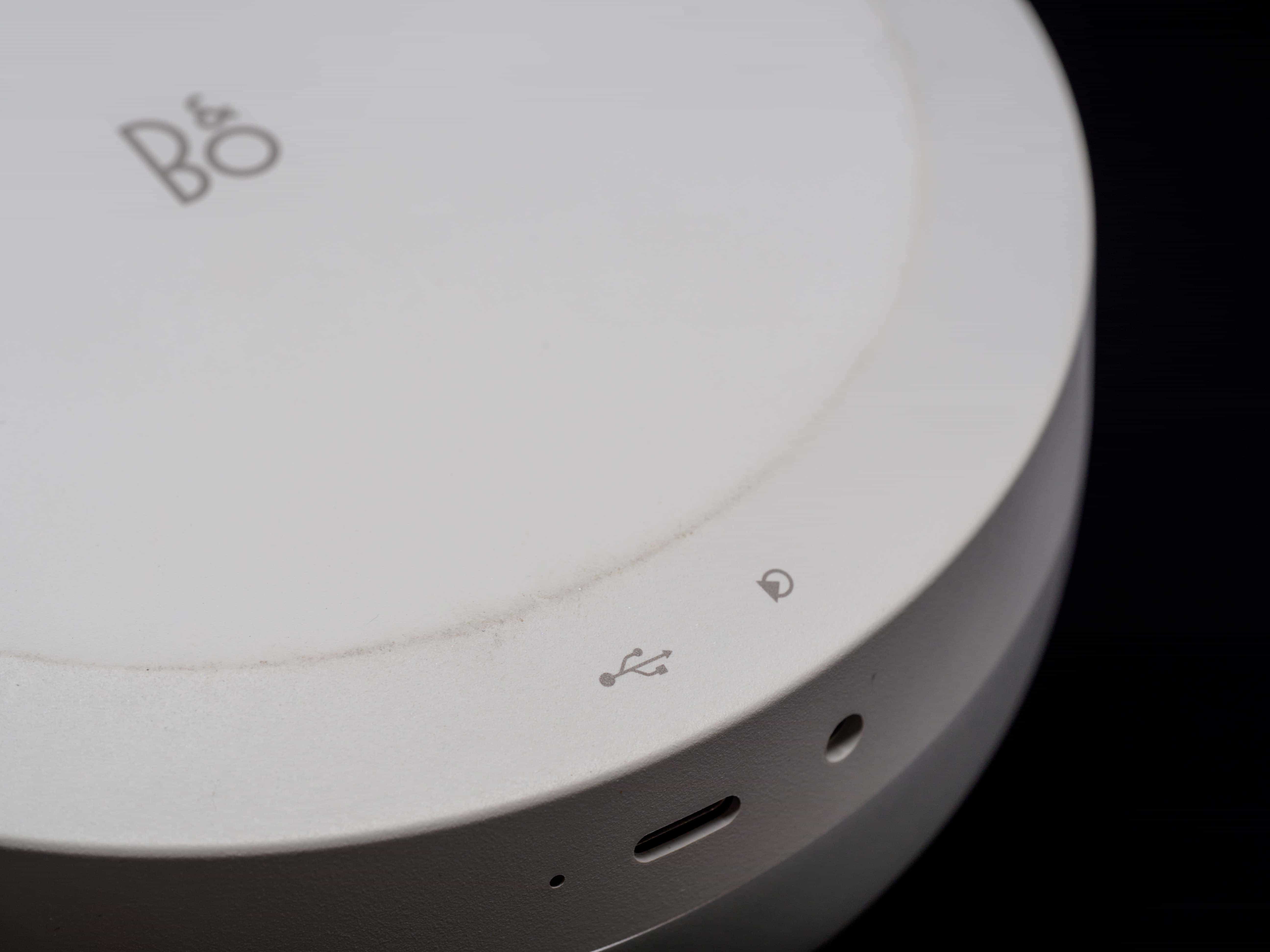
Charging is accomplished via USB-C, and there’s a 3.5mm audio input if you want to skip the whole Bluetooth experience.
Of Battery Life and Bluetooth Range
Despite the presence of a 3.5mm input jack (a pleasant surprise), most people will be using the Beoplay A1 as a wireless speaker, which means dealing with Bluetooth.
There’s nothing unusual in the A1’s implementation of Bluetooth. Pairing is reliable (if not particularly quick), and you can keep it connected to two devices simultaneously if you need to.
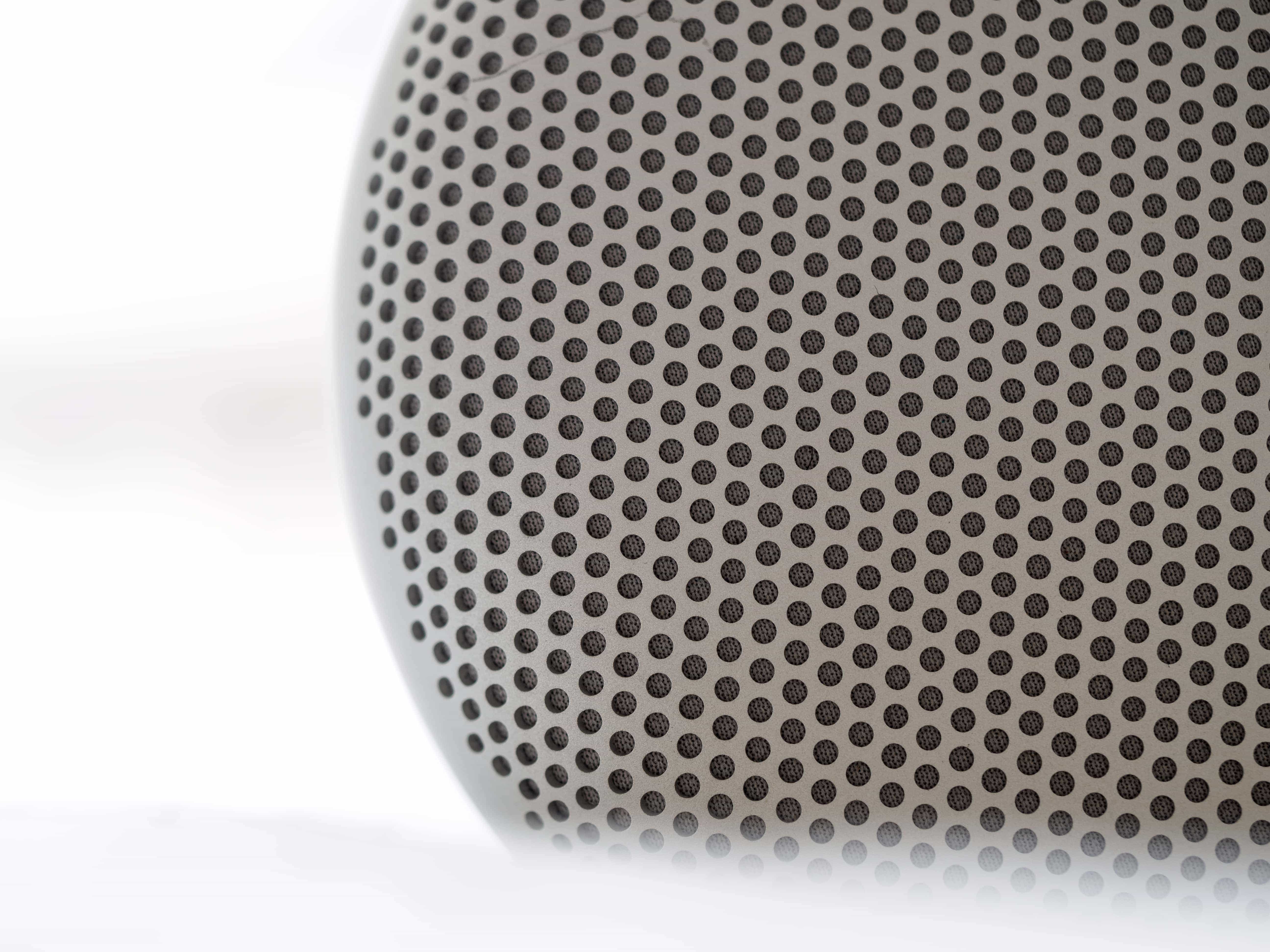
If you have two of them (or you have one and a friend has one), you can set them up to work as a stereo pair via the Beoplay app.
On the topic of multiple devices, I should mention that it’s possible to use the Beoplay app to set up a stereo system if you happen to have two A1 units on hand. I did not, so I was unable to test this, but in theory it should give you even better sound with proper stereo separation, or allow you to play the same thing in different rooms. It’s too bad you have to keep going back into the app to set it up each time though.
Range and battery life are the two biggest concerns with modern Bluetooth devices, and the A1 does well enough on both fronts. I was able to maintain strong signal over a good distance without obstructions, but I started getting dropouts when taking the A1 into a different room of the apartment, for example.
That’s Bluetooth for you.
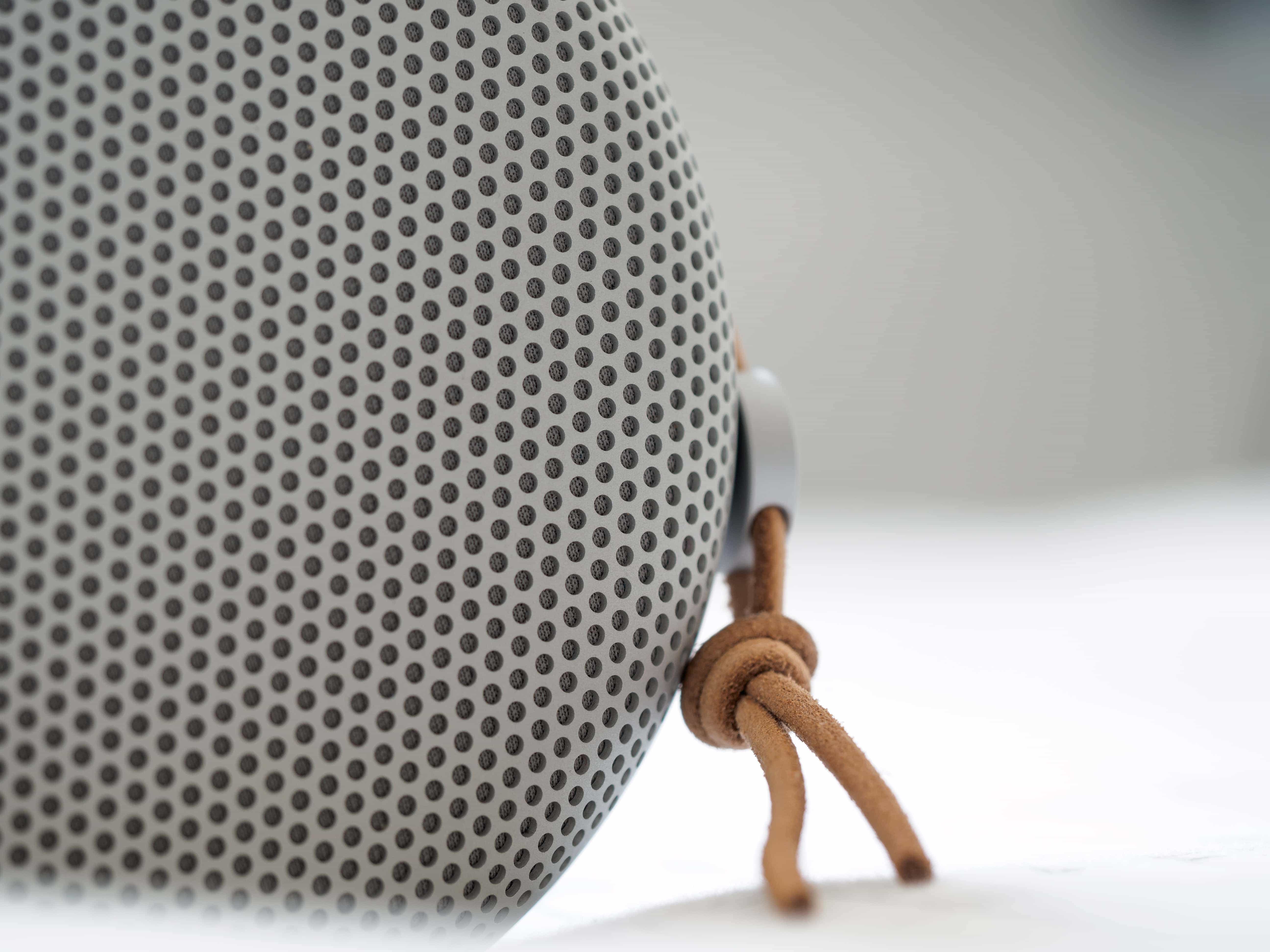
Battery life is extremely variable: amazing if you use it at moderate volumes but pretty terrible if you’re blasting tunes out at maximum loudness.
As for battery life, I was pleasantly surprised, but that’s likely because my usage almost never involved having the volume very high. For podcasts and most of my casual music listening indoors, I was able to get the advertised day-long playback lifespan without much effort. This is definitely not possible if you like to listen to things at high volumes though; push it past 70% volume and battery life drops precipitously to something more like 5 hours.
It takes three hours to charge it from empty using the included USB-C cable (a modern, if slightly inconvenient choice) so this definitely won’t keep the party going all night long if that’s your thing.
As you may have guessed from the presence of a microphone, the A1 can function as a speakerphone for calls as well, or for chatting with Siri. Unfortunately, anyone I tried to speak to this way complained about not hearing me well, so you’re probably better off sticking to your phone.
Attainable Luxury
The Beoplay A1 is remarkable in how focused it is. Instead of trying to do everything, it keeps its attention on the essentials and manages to succeed on almost every front.
It isn’t waterproof, but it can easily survive some bumps and knocks. It doesn’t have extraordinary range, but you can literally keep it tethered to you so you’re never too far. It doesn’t last as long as it could at full volume, but it sounds better than anything else while it’s going. At least until you start spending more serious money.
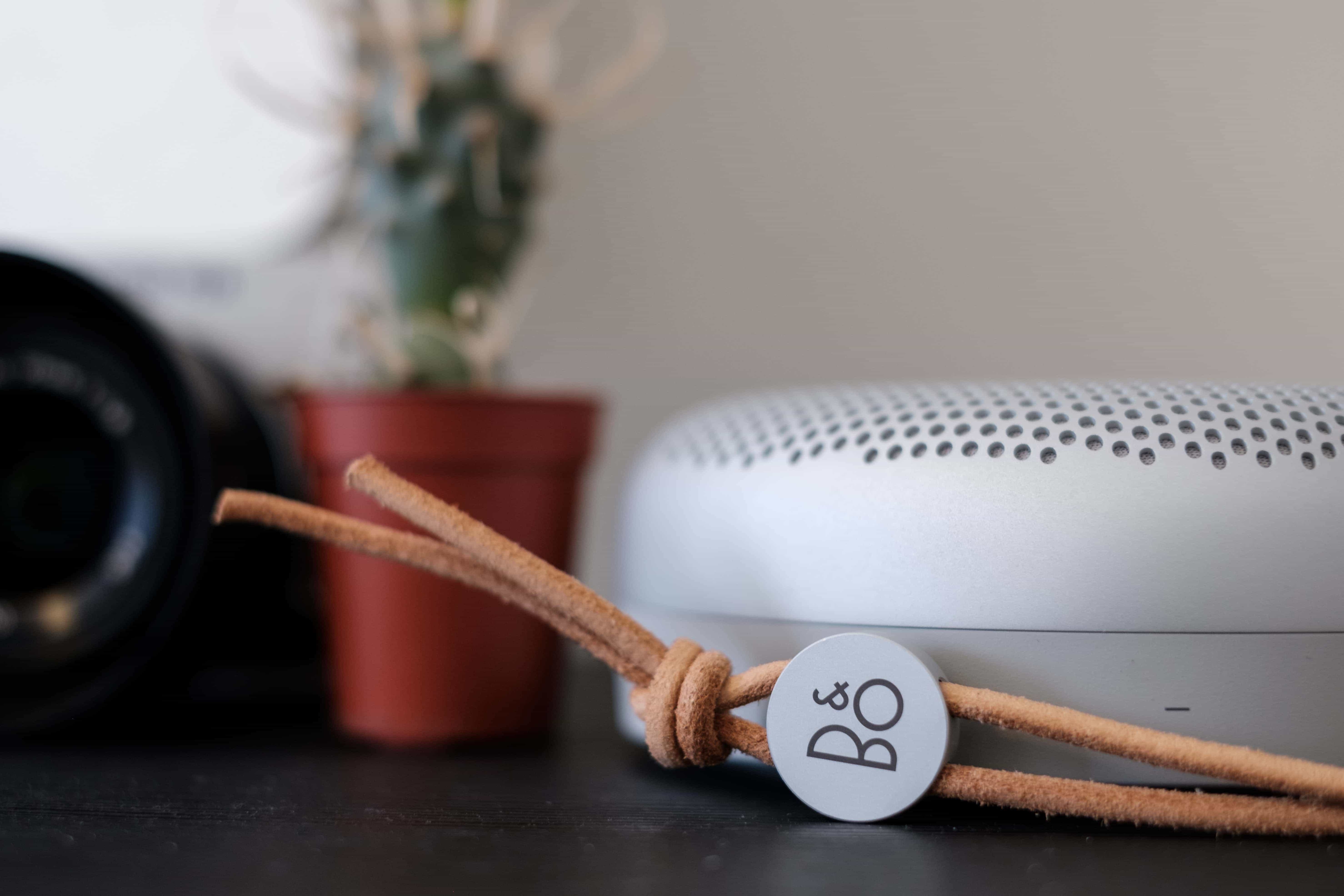
More than just a pretty face.
And that’s the best part: the A1 retails for $250 USD ($300 CAD if you’re shopping on Amazon.ca like me), which isn’t cheap, but is certainly accessible. If you’re spending this kind of money on a portable Bluetooth speaker, your alternatives either sound worse, look worse, or both.
The A1 is the result of a luxury brand making a consumer speaker. It looks like a work of art, it sounds like a more expensive system, and it’s built to take a beating.
That sure sounds like a winning combination to me.